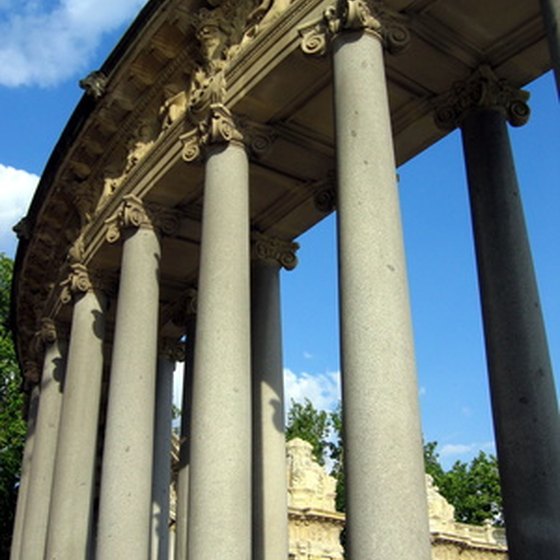Madrid is the historically and culturally rich capital of Spain, part of the European Union, and the third most-populous of all the European cities (after Paris and London). Madrid is a popular tourist destination in Europe. The city of Madrid is the largest city in Spain and is best known for its vivid nightlife, beautiful neighborhoods, and famous fútbol team Real Madrid.
Location and Weather
Madrid is located on the banks of the Manzanares River, in the center of the Iberian peninsula, 646 meters (2,119 feet) above sea level. Days are hot (high-80s Fahrenheit or higher) in the summer and cool (and occasionally snowy) in winter. Nights are cooler and are quite pleasant in summer but unpleasantly cold in winter. It is most likely to rain in the fall and spring seasons. Contrary to popular belief, because Madrid is in the middle of the country, it does not experience Mediterranean weather, so don’t visit Madrid if you’re looking for a good beach vacation.
You’ll likely fly into the Barajas Airport. Some neighborhoods to know include Corte, Letras, and Atocha, and surrounding municipalities include Alcala de Henares, Rascafria, and Toledo.
Population and Language
This capital city is home to 3 million people, of whom eight in 10 are native Spaniards and the other two are immigrants, mostly from South America. The local language is Spanish. Residents of Madrid have distinct accents, with further distinctive accents unique to different regions and the upper and lower classes. Residents of Madrid are called Madrileños.
Fashion and Nightlife
Madrid is a world fashion center and a good place to buy top-quality clothes, especially in the high-end areas of Almirante and Conde de Xiquena. The barrio of Salamanca is a recommended area for buying shoes and other leather goods. Different neighborhoods have different shopping districts and the metropolitan area is definitely the best area, especially in Chamartín, Gran Vía,
Madrid is also world-renowned for its nightlife. Traffic is fierce all hours of the evening, and many establishments stay open until the wee hours of the morning. In accordance with dining practices in many European countries, Spaniards eat dinner much later than Americans do; many restaurants do not open their doors until after 8 p.m. Tapas are very popular here, like in Barcelona, and many neighbourhoods have a variety of tapas bars. Madrid has a variety of clubs and restaurants to suit a wide spectrum of tastes.
Cultural Attractions
Popular attractions in Madrid include the Palacio Real, Thyssen museum, Puerta del Sol, Plaza Mayor, Casa de Campo, the Prado Museum, the Temple of Debod, Paseo del Prado and the Reina Sofía museum. Formerly the royal palace, the building has been preserved as a royal residence. The Parque del Retiro, or Retiro Park, serves as Madrid's main park, with beautiful lakes and magnificent monuments. Museo del Prado is a premier art museum with works by Picasso, Rembrandt, Goya, Titian, Botticelli, Rubens and Velazquez. The Rasto flea market is open on Saturday and Sundays and a wonderful place to buy unique gifts.
The Spanish Royal Family also resides in Madrid. This city has a complicated past, with former dictator Franco ruling here and the Spanish Civil War having many influences in their current day. There are also many Catholic, Arabic and Muslim influences as well.
Etiquette
Spaniards tend to require less "personal space" than Americans and tend to touch each other more on the shoulders and back. Service, such as in restaurants, moves relatively slowly, a reflection of the generally relaxed pace of living. Smoking does not bear the same taboo in Spain as it does in the U.S.





